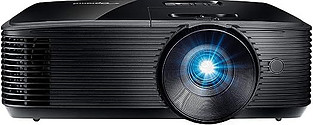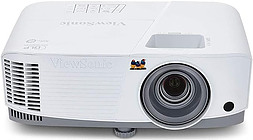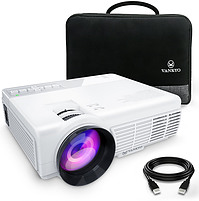Introduction: The Benefits of Hosting a Movie Night at Home
Hosting a movie night at home has become increasingly popular in recent years, and for good reason. Not only does it offer significant cost savings compared to going to a movie theater, but it also provides the convenience of not having to leave your house. Additionally, hosting a movie night at home allows you to customize your viewing experience to your liking. Whether you prefer a cozy night in with loved ones or a fun gathering with friends, hosting a movie night at home can be a memorable and enjoyable experience.
significant cost savings compared to going to a movie theater, but it also provides the convenience of not having to leave your house. Additionally, hosting a movie night at home allows you to customize your viewing experience to your liking. Whether you prefer a cozy night in with loved ones or a fun gathering with friends, hosting a movie night at home can be a memorable and enjoyable experience.
One of the biggest advantages of hosting a movie night at home is the cost savings. Going to a movie theater can be quite expensive, especially when you factor in the cost of tickets, concessions, and transportation. On the other hand, hosting a movie night at home allows you to watch your favorite films without breaking the bank. You can save money by streaming movies from subscription services or renting them digitally. Additionally, you have the option to make your own snacks and drinks, which can be significantly cheaper than buying them at a theater.
Another benefit of hosting a movie night at home is the convenience it offers. You don’t have to worry about getting dressed up or driving to a theater. Instead, you can relax in the comfort of your own home and watch movies at your own pace. You can pause the movie if you need to take a break or rewind if you missed something. This level of control is not possible in a movie theater setting. Furthermore, you can invite friends and family over to enjoy the movie with you, creating a more intimate and personal experience.
Lastly, hosting a movie night at home allows you to customize your viewing experience. You have the freedom to choose the movies you want to watch and create a lineup that suits your preferences. You can also adjust the volume and picture settings to your liking, ensuring optimal viewing pleasure. Additionally, you can create a cozy and inviting atmosphere by dimming the lights, adding comfortable seating, and decorating the space to enhance the movie-watching experience. Overall, hosting a movie night at home gives you the flexibility to tailor the experience to your preferences and create a memorable event for yourself and your guests.
What to Consider When Choosing an Inexpensive Home Theater Projector
When it comes to hosting a movie night at home, having a good quality projector is essential. However, many people assume that projectors are expensive and out of their budget. The truth is, there are plenty of inexpensive home theater projectors available on the market that offer great value for money. When choosing an inexpensive home theater projector, there are several factors to consider.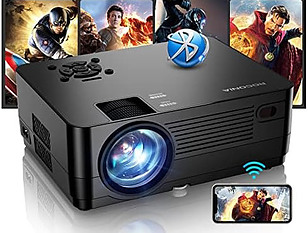
Firstly, resolution and brightness are important factors to consider when choosing a projector. The resolution determines the clarity and sharpness of the image, while brightness affects how well the image is displayed in different lighting conditions. Look for a projector with at least 1080p resolution for a high-definition viewing experience. As for brightness, aim for a projector with a minimum of 2,000 lumens to ensure a clear and vibrant image, even in well-lit rooms.
Another factor to consider is the lamp life and replacement cost of the projector. The lamp life refers to the number of hours the projector’s lamp is expected to last before it needs to be replaced. Look for a projector with a long lamp life to avoid frequent replacements, which can be costly. Additionally, consider the cost of replacement lamps when choosing a projector, as some lamps can be quite expensive.
Connectivity options are also important to consider when choosing an inexpensive home theater projector. Look for a projector that offers multiple input options, such as HDMI, USB, and VGA, to ensure compatibility with various devices. This will allow you to connect your projector to your laptop, gaming console, or streaming device easily.
Size and portability are additional factors to consider. If you plan on using your projector in different rooms or taking it with you on the go, look for a compact and lightweight projector that is easy to transport. On the other hand, if you plan on setting up a dedicated home theater room, you may opt for a larger projector that offers more advanced features.
Top 5 Best Affordable Home Theater Projectors: Features and Benefits
Now that we have discussed what to consider when choosing an inexpensive home theater projector, let’s take a look at the top 5 projectors on a budget. These projectors offer great value for money and are highly recommended for hosting a movie night at home.
The Optoma HD146X is a highly rated and affordable home theater projector. It offers a full HD 1080p resolution and 3,600 lumens of brightness, ensuring a clear and vibrant image. The projector also has a long lamp life of up to 15,000 hours, reducing the need for frequent lamp replacements. It features HDMI and USB connectivity options, making it compatible with various devices. The Optoma HD146X is also lightweight and portable, making it easy to set up in different rooms or take with you on the go.
2. Epson Home Cinema 880
The Epson Home Cinema 1080 is another excellent choice for an inexpensive home theater projector. It offers a high-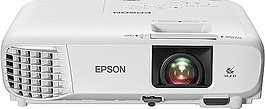 definition 720p resolution and 3,400 lumens of brightness, providing a sharp and bright image. The projector has a lamp life of up to 12,000 hours, ensuring long-lasting performance. It features HDMI and USB connectivity options, allowing you to connect your favorite devices easily. The Epson Home Cinema 880 is also compact and lightweight, making it ideal for portable use.
definition 720p resolution and 3,400 lumens of brightness, providing a sharp and bright image. The projector has a lamp life of up to 12,000 hours, ensuring long-lasting performance. It features HDMI and USB connectivity options, allowing you to connect your favorite devices easily. The Epson Home Cinema 880 is also compact and lightweight, making it ideal for portable use.
3. BenQ GV31 LED
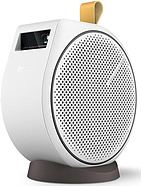
The BenQ GV31 LED is a budget-friendly home theater projector that offers impressive features. It boasts a full HD 1080p resolution and 300 ANSI lumens of brightness, delivering a stunning image quality. The projector has a lamp life of up to 20,000/30,000 eco hours, minimizing the need for lamp replacements. It offers HDMI and USB connectivity options, making it compatible with a wide range of devices. is also lightweight and portable, allowing for easy setup and transport.
The ViewSonic is a versatile and affordable home theater projector. It offers a WXGA 1280×800 (800p) resolution and 3,800 lumens of brightness, ensuring a clear and detailed image. The projector has a lamp life of up to 15,000 hours, providing long-lasting performance. It features HDMI and USB connectivity options, allowing for easy connection to various devices. The ViewSonic is also lightweight and portable, making it convenient to set up in different locations.
The VANKYO Leisure 3 is a budget-friendly option for those looking for a compact and portable home theater projector. It offers a native resolution of 800×480 pixels and 2,400 lumens of brightness, providing a decent image quality. The projector has a lamp life of up to 40,000 hours, ensuring long-lasting performance. It features HDMI, USB, and VGA connectivity options, making it compatible with different devices. The VANKYO Leisure 3 is also lightweight and compact, making it easy to carry and set up anywhere.
When comparing the prices of these projectors, the VANKYO Leisure 3 is the most affordable option, followed by the Epson Home Cinema 880, ViewSonic PA503W, BenQ MH535FHD, and Optoma HD146
However, it’s important to consider the features and benefits of each projector to determine which one best suits your needs and budget.
Projector Screen Options: DIY or Store-Bought?
Once you have chosen an inexpensive home theater projector, the next step is to decide on a projector screen. There are two main options to consider: DIY projector screens or store-bought screens. Each option has its own pros and cons, so it’s important to weigh them before making a decision.
DIY projector screens are a popular choice for those on a budget. They can be made using materials that are readily available and inexpensive, such as white blackout cloth, PVC pipes, and wooden frames. DIY projector screens offer the advantage of being customizable in terms of size and shape. You can create a screen that fits perfectly in your space and matches your desired aspect ratio. Additionally, DIY projector screens can be easily disassembled and stored when not in use. Another DIY screen is a white wall you may already have and for a better image you can buy Screen Paint for your wall and trim it up to look exactly like a store purchased screen.
However, DIY projector screens may not offer the same level of image quality as store-bought screens. The materials used for DIY screens may not be as reflective or smooth as those used in store-bought screens, which can affect the clarity and brightness of the image. Additionally, DIY screens may not be as durable or long-lasting as store-bought screens. They may require frequent cleaning or maintenance to ensure optimal performance.
On the other hand, store-bought projector screens offer a wide range of options in terms of size, aspect ratio, and material. They are specifically designed for optimal image quality and performance. Store-bought screens are typically made with high-quality materials that provide a smooth and reflective surface, resulting in a clear and vibrant image. They are also more durable and long-lasting compared to DIY screens.

Store-bought projector screens come in various types, including KHOMO 100″ fixed-frame screens, motorized screens, and portable screens. VIVOHOME 120 Inch Manual Pull Down Projector Screen are permanently mounted on a wall or frame, providing a sleek and professional look. Motorized screens can be raised or lowered with the touch of a button, offering convenience and flexibility. Portable screens are lightweight and easy to set up, making them ideal for on-the-go use.
When choosing a store-bought projector screen, consider factors such as size, aspect ratio, gain, and material. The size of the screen should be suitable for your space and viewing distance. The aspect ratio should match the aspect ratio of your projector to ensure proper image display. The gain refers to the screen’s ability to reflect light, with higher gain screens offering brighter images. Lastly, consider the material of the screen, such as matte white or gray, to achieve the desired image quality.
Ultimately, the choice between DIY and store-bought projector screens depends on your budget, space constraints, and personal preferences. If you are on a tight budget and enjoy DIY projects, a DIY projector screen may be a suitable option. However, if you prioritize image quality and durability, investing in a store-bought projector screen may be a better choice.
Setting Up Your Home Theater: Tips for Optimal Viewing Experience
Once you have chosen an inexpensive home theater projector and a suitable projector screen, it’s time to set up your home theater for an optimal viewing experience. Proper placement of the projector, lighting conditions, and room setup are important factors to consider when setting up your home theater.
Firstly, consider the placement and distance of the projector. The distance between the projector and the screen will determine the size of the projected image. Refer to the projector’s user manual or online resources for recommended throw distances and image sizes. Ensure that the projector is positioned at the correct height and angle to avoid distortion or keystone effect. Use a tripod or ceiling mount for stability and adjustability.
Next, consider the lighting conditions in your home theater. Ideally, the room should be as dark as possible to minimize ambient light and enhance the contrast and brightness of the projected image. Use blackout curtains or blinds to block out natural light from windows. If you have overhead lights, consider installing dimmer switches or using lamps with adjustable brightness. Avoid placing any light sources behind the screen, as this can cause glare and affect the image quality.
Room setup is another important aspect to consider when setting up your home theater. Arrange the seating in a way that provides optimal viewing angles and comfort. The distance between the seating and the screen should be appropriate for the size of the projected image. Consider the acoustics of the room and add sound-absorbing materials, such as curtains or rugs, to reduce echo and improve sound quality. If possible, dedicate a separate room or area for your home theater to create a more immersive experience.
Calibration and image adjustment are final steps in setting up your home theater. Use the projector’s built-in calibration tools or a calibration disc to adjust the color, contrast, and sharpness of the image. Fine-tune the settings to your personal preferences and the characteristics of your room. Consider using a test pattern or calibration software to ensure accurate colors and optimal image quality. Regularly clean the projector lens and screen to maintain optimal performance.
By following these tips for setting up your home theater, you can create an optimal viewing experience that rivals that of a movie theater. Take the time to properly position your projector, optimize lighting conditions, and arrange your room for comfort and acoustics. Calibration and image adjustment will ensure that you get the best possible picture quality. With a well-designed and properly set up home theater, you can enjoy an immersive movie-watching experience in the comfort of your own home.
Sound System Options: Affordable Soundbars and Speakers
While a good quality projector and screen are essential for a home theater setup, sound quality is equally important for an immersive movie-watching experience. Investing in an affordable sound system can greatly enhance the audio experience and make you feel like you’re in a real movie theater. There are several options to consider when it comes to affordable sound systems, including soundbars and speakers.
Soundbars are a popular choice for those looking for a compact and affordable sound system. They are designed to sit below or in front of the TV or projector screen and provide a wide soundstage. Soundbars typically consist of multiple speakers housed in a single unit, offering improved audio quality compared to built-in TV or projector speakers. They are easy to set up and require minimal wiring.
When choosing a soundbar, consider factors such as audio quality, connectivity options, and additional features. Look for a soundbar that offers clear and balanced sound, with good bass response and dialogue clarity. Consider the number of channels and drivers, as more channels and drivers generally result in a more immersive audio experience. Connectivity options such as HDMI, optical, and Bluetooth are important for compatibility with various devices. Additional features such as built-in subwoofers, virtual surround sound, and voice control can enhance the audio experience.
Affordable soundbar options include the VIZIO 2.0 Home Theater Sound Bar, Yamaha YAS-108, and TCL Alto 8i 2.1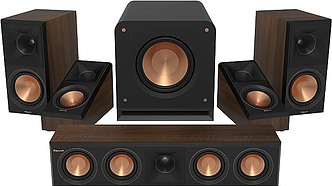 Soundbar. These soundbars offer good audio quality, multiple connectivity options, and additional features at an affordable price point. They are easy to set up and provide a significant improvement over built-in TV or projector speakers.
Soundbar. These soundbars offer good audio quality, multiple connectivity options, and additional features at an affordable price point. They are easy to set up and provide a significant improvement over built-in TV or projector speakers.
If you prefer a more traditional setup with separate speakers, there are also affordable speaker options.
- Yamaha SR-C20A Compact Soundbar with Built-In Subwoofer. …
- Bose TV Speaker. …
- Focal Vestia N 1 2-Way Bass-Reflex Bookshelf Loudspeaker, Black High Gloss. …
- Klipsch Reference Theater Pack 5.1-Channel Speaker System. …
- Yamaha YHT-5960U 5.1-Channel Home Theater System. …
- Focal Sib Evo Dolby Atmos 5.1.
I’m excited to have you as part of the community! I look forward to bringing you more exciting content in the future. In the meantime, please don’t hesitate to reach out if you have any further questions or comments. Here at Audio Video Adventures is where you can get all the latest in Projectors, Receivers, Speakers, and accessories as well as everything else you need for the ideal home theater experience. You can purchase any of the items in this blog post by clicking on the blue links.
